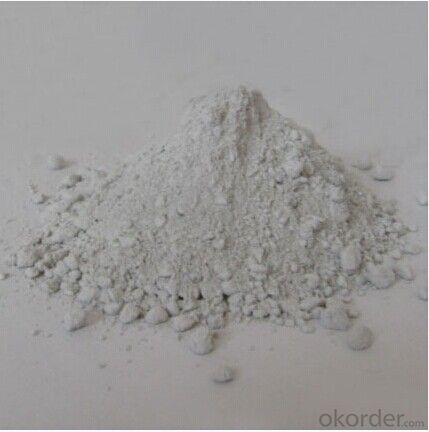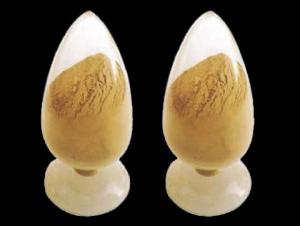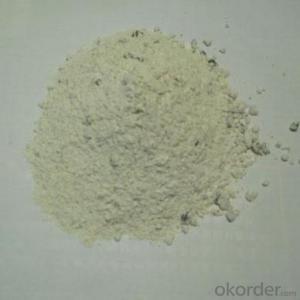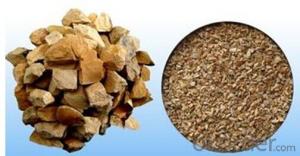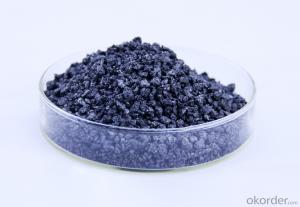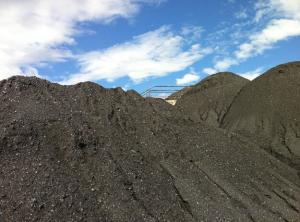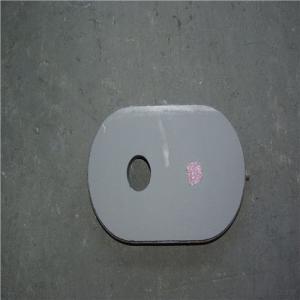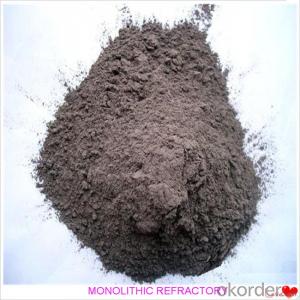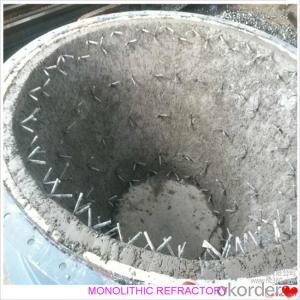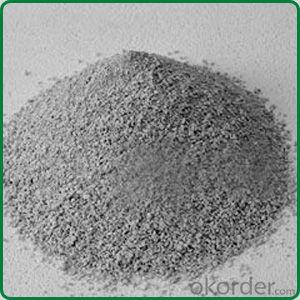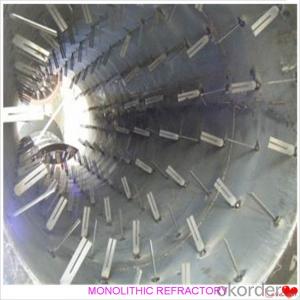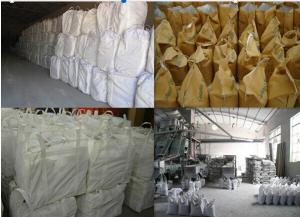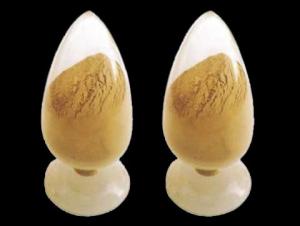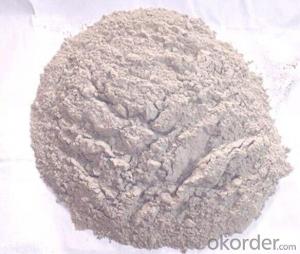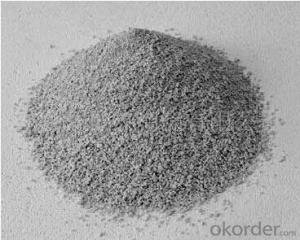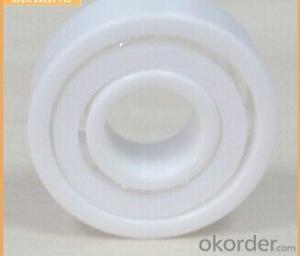Monolithic Refractories for Iron and Steel Industry - Castable Refractory for Cement Kiln and Boiler
- Loading Port:
- China Main Port
- Payment Terms:
- TT OR LC
- Min Order Qty:
- -
- Supply Capability:
- -
OKorder Service Pledge
OKorder Financial Service
You Might Also Like
Benefits:
1) Good performance to thermal stability, slag and abrasion resistance.
2) Good fluidity and convenient to install and maintain
3) Less installation and drying/sintering time
4) Efficiently reduced the production stoppages & downtimes
5) Labor and cost saving by prolonging campaign length.
| Refractory Castable for cement kiln | | | | |
| Items | HGJ-1 | HAJ-3 | HAM-2 | HAL-2 |
| Main Contents | Al2O3 | Al2O3 | MgO-Al2O3 | Al2O3-SiO2 |
| Characteristics | High strength anti-abrasion steel fiber castables | Chemical-bonding refractory castables | Low cement magnesium-aluminum castables | high purity bauxite low cement |
| Refractoriness | 1950℃ | 2150℃ | 2150℃ | 1700℃ |
| Density | 2.95g/cm3 | 2.89g/cm3 | 2.92g/cm3 | 2.55g/cm3 |
| Compressive Strength | 110℃×2h68.5MPa; | 110℃×2h59.2MPa; | 110℃×2h40.8MPa; | 110℃×2h52MPa |
| | 1500℃×3h 96.8 MPa | 1500℃×3h106.1MPa | 1500℃×3h102.5MPa | 1500 ℃×3h 75 MPa |
| Permanent Linear Changing Rate | 1500℃×3h+0.21% | 1500℃×3h+0.29% | 1500℃×3h+0.32% | 1500℃×3h±0.5% |
| Installation mode | casting | casting | casting | casting |
| Additive required | 5-10%water | 5-10%water | 5-10%water | 5-10%water |
| Application | Rotary kiln or industry furnace | Industry kiln | Ladle | differentpartsforcementkiln |
characteristics:
1. The dosage of cement is low, the content of calcium only accounts for 1/4-1/3 of common Refractory Castable
2. Wter consumption rate during the construction is almost 1/2 or 1/3 of the common Refractory Castable, so the Low Cement Refractory Castable has high density and low porosity.
3. High normal temperature cure property, intensity will be increased after medium temperature and high temperature. Three or five times more than common Refractory Castable.
4. Good volume stability under high temperature.
Application:
Material for metallurgy, petroleum, chemical and other industries kilns
Part of refining installation, like ladle cover
Insert for roof of the kiln
- Q: How do monolithic refractories withstand high temperatures and thermal cycling?
- Monolithic refractories, with their unique composition and structural characteristics, are designed to endure high temperatures and thermal cycling. To begin with, these refractories are composed of high-quality raw materials like alumina, silica, and magnesia. These materials possess exceptional thermal properties, including high melting points and low thermal conductivity. Consequently, they can maintain their strength and integrity even in extreme temperatures. Additionally, monolithic refractories are engineered to have a dense and compact microstructure. This dense structure prevents the infiltration of heat and gases, minimizing thermal shock and crack formation. Moreover, the compact microstructure enhances the refractory's thermal conductivity, allowing it to efficiently distribute and dissipate heat. Furthermore, special additives and bonding agents are often incorporated into monolithic refractories to enhance their resistance to thermal cycling. These additives improve the refractory's thermal expansion properties, enabling it to expand and contract without cracking or spalling during rapid temperature changes. Some bonding agents also provide flexibility to the refractory, allowing it to withstand thermal stresses without compromising its structural integrity. In addition to these inherent characteristics, proper installation techniques are crucial for the refractory's ability to withstand high temperatures and thermal cycling. Careful application and curing ensure uniformity and minimize the development of internal stresses. Adequate curing and heat treatment processes create a strong and durable bond between the refractory and the substrate, enhancing its resistance to thermal shock and cyclic thermal loading. In summary, the composition, microstructure, and installation techniques of monolithic refractories work together to enable them to withstand high temperatures and thermal cycling. These factors result in excellent thermal conductivity, resistance to thermal shock, and the ability to expand and contract without compromising the refractory's structural integrity.
- Q: How do monolithic refractories contribute to energy efficiency in iron and steel production?
- Monolithic refractories play a crucial role in enhancing energy efficiency in iron and steel production processes. These refractories are unshaped materials that are used to line the various components of furnaces, kilns, and other high-temperature equipment involved in the production of iron and steel. One way monolithic refractories contribute to energy efficiency is by providing excellent insulation. These materials have low thermal conductivity, which means they effectively reduce heat transfer from the furnace or kiln to the surrounding environment. By minimizing heat loss, monolithic refractories help maintain high temperatures within the production units, which in turn reduces the energy required to sustain the desired operating conditions. Furthermore, monolithic refractories offer superior resistance to thermal shock and wear, ensuring the longevity of the lining materials. This durability reduces the need for frequent repairs and replacements, leading to less downtime and increased operational efficiency. As a result, energy is conserved since the production units can continuously operate at optimal temperatures without interruptions. In addition, monolithic refractories have excellent resistance to chemical reactions, corrosion, and erosion caused by molten metals and slag. This resistance reduces the formation of cracks and defects in the lining, which can compromise the insulation and increase heat loss. By maintaining a robust and intact lining, monolithic refractories contribute to energy efficiency by minimizing heat escape and ensuring the efficient utilization of energy for the iron and steel production processes. Moreover, the use of monolithic refractories allows for design flexibility in the construction of furnaces and kilns. Their ability to be shaped and applied in various configurations enables the creation of optimized lining structures that enhance heat transfer and combustion efficiency. This flexibility empowers engineers and operators to design and modify the production units to maximize energy efficiency and minimize energy wastage. Overall, monolithic refractories contribute significantly to energy efficiency in iron and steel production by providing excellent insulation, durability, resistance to thermal and chemical degradation, and design flexibility. By reducing heat loss, minimizing repairs and replacements, and optimizing heat transfer, these refractories play a vital role in conserving energy and improving the overall sustainability of the iron and steel industry.
- Q: What are the recent developments in monolithic refractories for the iron and steel industry?
- Recent developments in monolithic refractories for the iron and steel industry include advancements in material composition, manufacturing techniques, and application methods. These developments have led to improved refractory performance, enhanced durability, and increased energy efficiency. Some notable developments include the use of new raw materials, such as nano-sized additives and ultra-high temperature-resistant binders, which enhance the refractory's resistance to thermal shock and corrosion. Additionally, advancements in manufacturing techniques, such as advanced mixing technologies and precise curing processes, have resulted in more homogenous and consistent refractory structures. Furthermore, there have been innovations in application methods, including the use of robotic systems for precise and efficient installation, leading to reduced downtime and increased productivity in the iron and steel industry. Overall, these recent developments in monolithic refractories have significantly contributed to the optimization of iron and steel production processes.
- Q: How do monolithic refractories handle thermal expansion and contraction?
- Monolithic refractories handle thermal expansion and contraction by their ability to withstand high temperatures and adapt to changes in size without cracking or breaking. They are designed to have low thermal conductivity, which helps to minimize stress caused by thermal cycling. Additionally, they are often composed of materials with high refractoriness and high thermal shock resistance, allowing them to expand and contract with minimal damage.
- Q: How do monolithic refractories prevent thermal radiation in the iron and steel industry?
- Monolithic refractories play a crucial role in preventing thermal radiation in the iron and steel industry. Thermal radiation refers to the transfer of heat energy through electromagnetic waves, and it can be a significant challenge in this industry due to the high temperatures involved. Monolithic refractories, which are single-piece refractory materials, are designed to have excellent thermal insulation properties. They have low thermal conductivity, which means they are not good conductors of heat. This property allows them to act as a barrier against thermal radiation. When used in the iron and steel industry, monolithic refractories are typically applied as linings in furnaces, ladles, and other equipment that are exposed to extremely high temperatures. These linings serve as a protective layer, preventing the heat from escaping and reducing the amount of thermal radiation emitted. Additionally, monolithic refractories have high emissivity, which refers to their ability to absorb and re-emit thermal radiation. This property allows them to effectively capture and contain the heat within the equipment, minimizing the amount of radiation that escapes into the surroundings. By preventing thermal radiation, monolithic refractories help to maintain the desired temperatures within the iron and steel production process. This is crucial for achieving efficient and controlled operations, as well as ensuring the quality of the final products. Furthermore, the use of monolithic refractories in the iron and steel industry also contributes to energy savings. By reducing the heat loss through thermal radiation, less energy is required to maintain the desired temperatures, resulting in lower energy consumption and cost savings. In conclusion, monolithic refractories are essential in preventing thermal radiation in the iron and steel industry. Their excellent thermal insulation properties, low thermal conductivity, and high emissivity make them effective barriers against heat transfer through radiation. By minimizing heat loss and ensuring controlled temperatures, monolithic refractories contribute to efficient operations, high-quality products, and energy savings.
- Q: How do monolithic refractories contribute to energy efficiency in the iron and steel industry?
- Monolithic refractories play a crucial role in enhancing energy efficiency in the iron and steel industry through various mechanisms. Firstly, these materials have excellent thermal insulation properties, which helps in minimizing heat loss from the furnaces and other high-temperature equipment. By reducing heat loss, monolithic refractories ensure that the heat generated during the iron and steel production process is efficiently utilized, leading to significant energy savings. Furthermore, monolithic refractories exhibit superior thermal shock resistance, allowing them to withstand rapid temperature changes without cracking or spalling. This property is particularly important in the iron and steel industry, where the furnaces and other equipment are subjected to extreme temperature variations. By maintaining structural integrity even under such conditions, monolithic refractories prevent heat leakage and ensure that the energy input is effectively utilized. Moreover, these refractories also contribute to energy efficiency by reducing downtime and improving operational efficiency. Monolithic refractories are known for their easy installation and repair, resulting in shorter maintenance and repair cycles. This minimizes the downtime required for furnace maintenance, allowing for continuous operation and uninterrupted energy utilization. Additionally, the high durability of monolithic refractories reduces the need for frequent replacements, further enhancing energy efficiency by reducing material and energy waste associated with regular repairs. In conclusion, monolithic refractories significantly contribute to energy efficiency in the iron and steel industry by minimizing heat loss, withstanding thermal shocks, and reducing downtime. These materials ensure that the energy input in the production process is effectively utilized, resulting in substantial energy savings and improved operational efficiency.
- Q: How do monolithic refractories contribute to the safety of iron and steel operations?
- Monolithic refractories play a crucial role in enhancing the safety of iron and steel operations. These refractories are made of a single, continuous material, which offers several benefits that contribute to the overall safety of the operations. Firstly, monolithic refractories provide excellent thermal insulation. They are designed to withstand high temperatures, preventing heat transfer to the surrounding environment. This insulation property helps in maintaining a safe working temperature for the operators, reducing the risk of burns or other heat-related injuries. Furthermore, monolithic refractories have high resistance to chemical attack. In iron and steel operations, various chemicals and molten metals are used, which can be corrosive and hazardous. The use of monolithic refractories as lining materials creates a protective barrier that resists the corrosive effects of these substances, preventing leaks and potential accidents. Another safety benefit is the ability of monolithic refractories to withstand mechanical stress. Steelmaking processes involve heavy machinery and equipment, which can exert significant pressure on the refractory linings. Monolithic refractories have excellent mechanical strength, which enables them to withstand these stresses and maintain their integrity. This prevents the risk of sudden failure or collapse, reducing the possibility of accidents and injuries due to falling debris. Additionally, monolithic refractories offer easy installation and repair. They can be applied as a castable or gunning material, allowing for quick and efficient lining of furnaces, ladles, and other equipment. This ease of installation reduces downtime during maintenance or repairs, minimizing the risk of accidents caused by delayed or prolonged shutdowns. In summary, monolithic refractories contribute to the safety of iron and steel operations through their excellent thermal insulation, resistance to chemical attack, ability to withstand mechanical stress, and ease of installation and repair. By providing a protective barrier, these refractories help in preventing injuries, maintaining a safe working environment, and minimizing the potential hazards associated with high temperatures, corrosive substances, and mechanical failures.
- Q: Can monolithic refractories be used for the lining of ladle refining furnaces and VOD converters?
- Indeed, ladle refining furnaces and VOD converters can benefit from the utilization of monolithic refractories. These refractories, which consist of a single, uniform material, can be molded and installed in various settings, particularly those involving extreme temperatures such as ladle refining furnaces and VOD converters. The advantage of monolithic refractories lies in their simplicity of application and repair. They can be either cast or gunned in place, offering flexibility in terms of lining design and installation. The lining of ladle refining furnaces and VOD converters requires materials capable of withstanding high temperatures, chemical reactions, and mechanical stresses. Monolithic refractories are well-suited for these demanding applications due to their exceptional resistance to thermal shock and chemical attack. In the case of ladle refining furnaces, monolithic refractories are used to line the vessel in which molten metal is contained and processed. By doing so, these refractories help to maintain the desired temperature and safeguard the ladle from the corrosive effects of both molten metal and slag. Additionally, they serve as insulation to minimize heat loss and enhance energy efficiency. VOD converters, on the other hand, are employed in the steelmaking process to reduce the carbon content of molten steel. Monolithic refractories play a crucial role in lining the converter's vessel and ensuring the maintenance of the required temperature for the decarburization reaction. Furthermore, they provide protection against the corrosive impact of molten metal and slag, thereby guaranteeing the converter's durability and performance. To summarize, monolithic refractories possess outstanding characteristics that make them an excellent choice for lining ladle refining furnaces and VOD converters. Their versatility, ease of installation, and ability to withstand high temperatures and chemical attack render them perfectly suited for these critical applications within the steel industry.
- Q: What are the limitations of monolithic refractories in high-temperature applications?
- Monolithic refractories are known for their versatility and ease of installation, making them popular in a variety of high-temperature applications. However, they do have certain limitations that need to be considered. Firstly, monolithic refractories have a limited thermal shock resistance. Rapid temperature changes, such as during startup or shutdown procedures, can cause thermal stress, leading to cracking or spalling. This can be a significant concern in applications where the refractory is subjected to frequent temperature fluctuations. Secondly, monolithic refractories have relatively lower mechanical strength compared to traditional brick or block refractories. This can result in reduced resistance to mechanical stress, such as abrasion or impact, particularly in high-temperature environments. Therefore, they may not be suitable for applications with high mechanical loading or abrasive conditions. Another limitation of monolithic refractories is their susceptibility to chemical attack. Certain aggressive chemical environments can cause chemical reactions with the refractory material, leading to deterioration or corrosion. This can be a concern in applications involving acidic or alkaline substances, where special refractory materials may be required. Furthermore, monolithic refractories can have a higher susceptibility to spalling or erosion caused by thermal cycling. The repeated expansion and contraction of the refractory material due to temperature changes can lead to the formation of cracks or gaps, making them more prone to erosion from gases or liquids. This limitation should be carefully considered in applications where long-term durability is essential. Lastly, monolithic refractories can be challenging to repair or replace compared to brick or block refractories. Once installed, it can be difficult to remove and replace a monolithic lining, especially in complex shapes or confined spaces. This limitation can result in longer downtime or increased costs for maintenance or repairs. In summary, while monolithic refractories offer several advantages in high-temperature applications, they also have limitations in terms of thermal shock resistance, mechanical strength, chemical resistance, erosion, and repairability. These limitations should be carefully evaluated to ensure the suitability of monolithic refractories for specific application requirements.
- Q: What are the key factors affecting the installation and curing of monolithic refractories?
- The installation and curing of monolithic refractories can be affected by several important factors: 1. Material selection: Choosing the right monolithic refractory material is crucial as it determines how it will be installed and cured. Different materials have different requirements, so it is important to select the appropriate material for the specific application. 2. Surface preparation: Properly preparing the surface is essential for the successful installation and curing of monolithic refractories. The surface must be clean, free from contaminants, and properly roughened to ensure good adhesion of the refractory material. 3. Mixing and proportioning: How the refractory material is mixed and proportioned plays a significant role in its installation and curing. Following the manufacturer's instructions for mixing ratios and ensuring thorough mixing is important to achieve a uniform mixture. 4. Application technique: The technique used to apply the monolithic refractory material can greatly impact its installation and curing. Employing proper application techniques, such as gunning, casting, or ramming, is necessary to ensure uniformity and proper bonding with the substrate. 5. Temperature control: Controlling the temperature during installation and curing is critical for achieving the desired properties in the monolithic refractory. The curing process should be carried out at the recommended temperature, and sudden temperature changes should be avoided to prevent thermal stresses. 6. Moisture content: The moisture content of the refractory material and the surrounding environment can affect its installation and curing. Excessive moisture can cause shrinkage, cracking, or poor bonding, while insufficient moisture can hinder proper curing. Maintaining the optimum moisture content for the specific refractory material is important. 7. Curing time: The required curing time for monolithic refractories varies depending on the material and application. It is crucial to follow the recommended curing time to allow for proper strength development and dimensional stability. 8. Environmental conditions: Environmental factors, such as humidity, temperature, and air circulation, can influence the installation and curing of monolithic refractories. It is important to maintain suitable environmental conditions to facilitate proper drying and curing. In conclusion, understanding and addressing these key factors are essential to ensure the successful installation and curing of monolithic refractories, leading to improved performance and longevity of the refractory lining.
Send your message to us
Monolithic Refractories for Iron and Steel Industry - Castable Refractory for Cement Kiln and Boiler
- Loading Port:
- China Main Port
- Payment Terms:
- TT OR LC
- Min Order Qty:
- -
- Supply Capability:
- -
OKorder Service Pledge
OKorder Financial Service
Similar products
Hot products
Hot Searches
Related keywords

